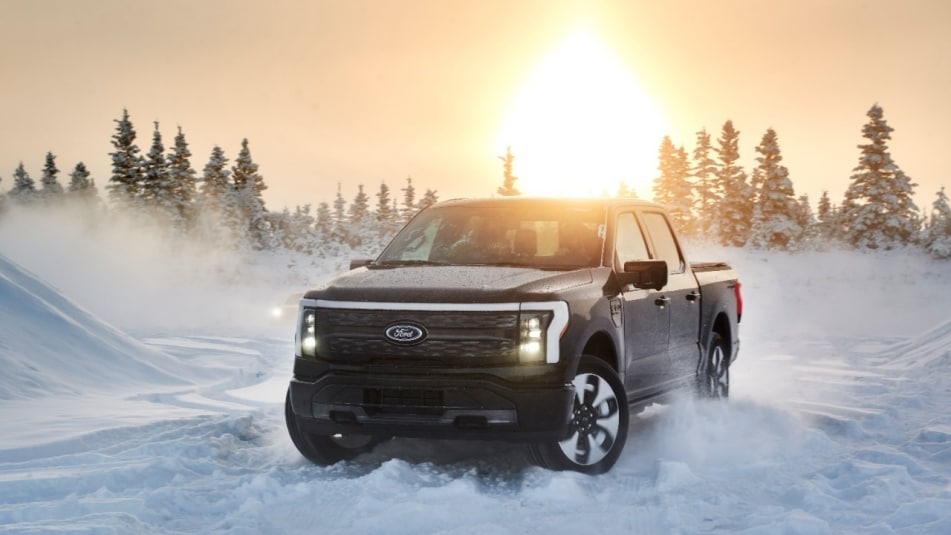EV 101: Cold Weather Driving
EV 101: Cold Weather Driving
Posted on February 8, 2024
Tips to help maximize the range of your EV in extreme weather
Ford EVs have been tested in extreme cold conditions, enduring months of real-world winter driving in Alaska and Michigan’s Upper Peninsula. The batteries have been subjected to temperatures as high as 60°C to as low as minus 40°C in Ford’s atmospheric test chambers. However, all-electric vehicles experience energy decreases in cold temperatures due to battery cell chemistry. Temperatures below 4°C cause the electrolyte fluid to become sluggish, limiting how much power is available to discharge and how quickly the vehicle’s battery can charge. As EV customers across Canada experience winter with their new EVs, Ford wants to help make them aware that in low temperatures they could see a significant reduction in range, which is normal.

When temperatures start to drop below freezing, here are some tips for how you can best prepare your EV to maximize range in extreme weather conditions:
1. Park your EV in a garage: Garage storage helps to ensure that harsh weather conditions outside do not affect your vehicle, and maintaining a warmer storage temperature than outdoors will aid in vehicle and battery performance.
2. Plug in your EV when parked for extended periods of time: Keeping the vehicle plugged in works to maintain battery health and helps to prevent excessive discharge scenarios.
3. Precondition your vehicle before use to warm the battery while plugged-in: By preconditioning your vehicle, you’re allowing the battery to warm to optimum temperature before use, positively affecting range and driving dynamics. For Ford EV owners, preconditioning can be scheduled using the vehicle’s SYNC touchscreen or from the comfort of your couch using the FordPass app.
4. The best way to keep warm: If equipped, use the heated seats and steering wheel as primary heat to reduce energy consumed by HVAC.
5. Turn off the heat when charging your EV: When charging, turn off the heater if possible, or lower the temperature enough to remain comfortable (especially when using DC Fast Charging).
6. Use your vehicle’s Ford Onboard Navigation to locate a DC Fast Charging station: In doing this, the vehicle preconditions by warming up the battery within ~30 miles of your destination. This allows the battery to accept a charge faster in cold weather, getting you back on the road quicker.
7. Keep driving speeds moderate as high speeds use more energy: Higher speeds can negatively impact range in all types of weather. For best results, Ford recommends limiting your speed when possible.
8. Ensure your tires are at the proper pressure: Proper tire pressure not only works to maximize range, it also works to ensure that the correct amount of tire surface area is gripping the road. Tires that are over or underinflated can lead to range degradation along with safety and performance issues. You can find the proper tire pressure figures for your vehicle using either the sticker on the door jamb, the tire pressure app on your center screen, or the owner’s manual shortcut also located using the center screen.
9. Plan your route and be prepared for whatever winter brings: Before leaving, identify all the charging locations on your route and plan your stops strategically. As with all winter driving, expect the unexpected. Make sure you have a plan in the event you run into poor conditions.

